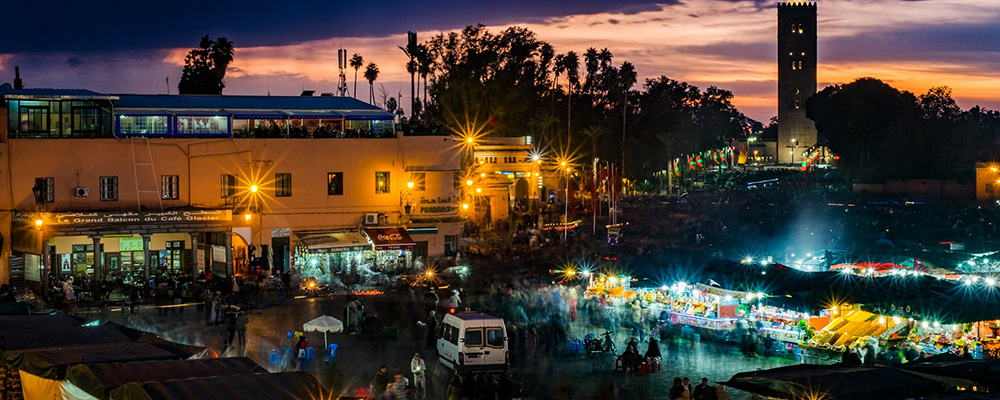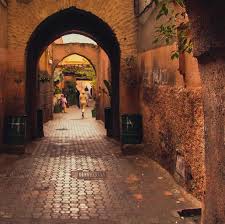
Authentic Handicrafts in Marrakech | Best Local Artisan Souks & Shops
Where to Find Authentic Handicrafts in Marrakech
In the heart of Marrakech’s Medina lies a world where art, tradition, and human touch still define creation. Here, the hum of hammering metal, the rhythm of weaving looms, and the scent of cedar wood fill narrow alleys. For travelers seeking more than souvenirs — those who crave authenticity and connection — Marrakech is the living museum of Moroccan craftsmanship. But with hundreds of shops, how do you find what’s truly authentic? That’s the purpose of this guide: to help you discover the genuine artisans, hidden cooperatives, and real workshops that keep Marrakech’s soul alive.
Understanding Moroccan Handicrafts
Moroccan handicrafts are not mass-produced items; they’re stories shaped by hands, culture, and patience. Every region has its specialty — Fez is famous for ceramics, Essaouira for thuya wood, and Marrakech for leather, carpets, lanterns, and metalwork. But in the Marrakech Medina, all these worlds meet. Local craftsmen, known as maalems, have inherited skills passed down through generations. Each object — a lamp, rug, or silver bracelet — reflects the maker’s identity and the cultural richness of Morocco.
The Best Places to Buy Authentic Handicrafts in Marrakech
The challenge isn’t finding crafts — it’s finding the right ones. Many souks now sell imported or factory-made products. But if you know where to walk, Marrakech still hides true artistry in plain sight.
1. Souk Haddadine (The Blacksmiths’ Souk)
This is where fire meets tradition. In Souk Haddadine, craftsmen forge lanterns, teapots, and decorative metalwork entirely by hand. The sound of hammers echo through the narrow lanes as artisans create detailed filigree patterns from brass and copper. For something special, ask to see hand-punched lamps — the patterns they cast on walls when lit are mesmerizing.
2. Souk Semmarine (The Beating Heart of the Medina)
Souk Semmarine is one of Marrakech’s main arteries. It’s busy, colorful, and full of energy. Here, you’ll find handmade slippers (babouches), textiles, jewelry, and traditional Moroccan clothing. The trick is to look for shops where the owner is working in front of you — that’s the sign of authenticity. Don’t hesitate to ask questions. Locals love explaining how their goods are made.
3. Souk Zrabia (The Carpet Market)
Carpet shopping is an art in itself, and Souk Zrabia is the center of it. Authentic Moroccan carpets are handwoven, often taking months to complete. Ask to see Berber rugs from the High Atlas or Beni Ourain rugs with their minimalist black-and-white designs. The best shops offer a tea, a story, and patience — real artisans will never pressure you.
4. Souk Cherratine (Leather Craftsmen’s Quarter)
Marrakech has been a leather capital since the Almoravid dynasty. Souk Cherratine is home to the tanners and leatherworkers who still use centuries-old methods. From bags and belts to poufs and jackets, everything here carries the smell of genuine craftsmanship. Visit early in the morning to see artisans at work cutting, dyeing, and sewing.
5. Ensemble Artisanal (for Guaranteed Authenticity)
If you want to shop without haggling or worrying about quality, head to the Ensemble Artisanal on Avenue Mohammed V. This government-supported cooperative gathers skilled artisans from all over Morocco under one roof. Prices are fixed, and every piece is handmade. It’s ideal for travelers who want authentic crafts but prefer a calm shopping experience outside the Medina’s chaos.
6. Rue de la Kasbah & Mellah District
For more peaceful exploration, walk to the Mellah (the old Jewish quarter). Here, small family workshops sell silver jewelry, ornate wooden boxes, and handwoven baskets. Nearby, in Rue de la Kasbah, you’ll find ceramic shops displaying hand-painted tajines and zellij tiles. These areas attract fewer tourists, making it easier to connect directly with artisans.
7. Women’s Cooperatives and Fair Trade Workshops
Marrakech also supports women’s cooperatives where local women produce high-quality argan oil, woven textiles, and embroidery. These cooperatives empower communities while keeping traditions alive. Look for labels like “Coopérative Féminine” or visit ethical spots such as the Maison de l’Artisan or Koulchi Collective near Bab Doukkala. Buying here means your money directly supports Moroccan families.
How to Recognize Genuine Handicrafts
Authentic Moroccan handicrafts have a soul — small imperfections, natural materials, and signs of human touch. Fake items, in contrast, look too perfect. A real handwoven rug will have uneven knots on the back. Hand-punched lamps have irregular holes, while molded ones are identical. Real pottery feels weighty, and the glaze is never completely uniform. Always ask, “Est-ce fait à la main?” (Is it handmade?) or “Fait ici à Marrakech?” (Made here in Marrakech?). If the seller proudly explains, you’re likely in the right place.
Bargaining with Respect
Negotiating prices is part of Moroccan culture, but it should always be done respectfully. Begin with a smile, show genuine interest, and remember — artisans put their time and heart into their work. Start by offering about 60% of the asking price, and expect to meet somewhere in the middle. If you buy multiple items, you can often get a fair discount. Bargaining isn’t a battle; it’s a conversation — and it can be one of the most enjoyable parts of your shopping adventure.
Meeting the Artisans
One of the greatest joys of exploring Marrakech’s handicraft scene is meeting the people behind the work. Some artisans have been perfecting their craft for 30 or 40 years. When you take time to talk, they’ll share stories about their families, their villages, and their mentors. You’ll realize that every item carries not just design, but heritage. These human connections are what make shopping in Marrakech unforgettable.
How a Local Guide Makes the Difference
The Medina is vast — over 1,000 narrow alleys, many unmarked. Finding authentic artisans takes experience. A local guide can lead you to workshops hidden deep within the Medina, away from the tourist routes. You’ll see craftsmen at work, learn about each material, and avoid shops selling imported goods. With a trusted guide, shopping becomes a cultural journey instead of a commercial one.
Sustainable Shopping: Supporting Local Communities
Choosing authentic, handmade crafts is also an act of sustainability. When you buy from artisans, your money goes directly into local households. You help preserve traditional skills that are disappearing under global mass production. Look for handmade items made from natural, recycled, or locally sourced materials — such as palm leaf baskets, wool rugs, or tadelakt pottery. Every purchase you make has impact.
What to Buy: A Quick Artisan Checklist
Leather Goods: Bags, slippers, belts, poufs from Souk Cherratine.
Carpets & Textiles: Berber rugs, blankets, and cushions from Souk Zrabia or women’s cooperatives.
Metalwork: Lamps, trays, and teapots from Souk Haddadine.
Woodwork: Hand-carved cedar boxes and thuya wood furniture from Mellah or Ensemble Artisanal.
Pottery & Ceramics: Colorful bowls, tajines, and zellij tiles from Rue de la Kasbah.
Jewelry: Silver and Amazigh designs from the Mellah district.
Tips for a Smooth Shopping Experience
Visit early in the morning when artisans are fresh and shops are quieter.
Carry cash in small bills (many small shops don’t take cards).
Ask permission before taking photos.
Combine shopping with a guided cultural walk for context and safety.
Always stay hydrated — Marrakech’s sun can be intense.
Why Authentic Matters
In a world of mass production, authenticity is rare and precious. Marrakech’s artisans don’t just make products — they make cultural memory tangible. When you hold a handwoven carpet or a hammered brass lamp, you’re holding centuries of history, knowledge, and pride. Each item connects you to the rhythm of human creativity that still thrives in the Medina’s heart.
Final Thoughts: Take a Piece of Marrakech Home
Finding authentic handicrafts in Marrakech isn’t about buying things — it’s about discovering meaning. It’s about meeting real people who turn raw materials into art with passion and devotion. When you leave with a handmade treasure, you carry a piece of Marrakech’s living soul with you.
So take your time, walk slowly through the Medina, and let your heart guide your choices. Because in Marrakech, the most beautiful souvenirs are made by hands — and remembered by hearts.
Book Your Marrakech Shopping Tour Now — WhatsApp Morocco +212614905398
